In this article, we are going to explain how to use EDATE and the EOMONTH functions in Microsoft Excel. They are basically, both date and time functions.
- EDATE is a function in Excel that returns the serial number of the date, which is the indicated number of months before and after the start date. The Edate function is used to calculate the maturity date and due date that falls on the month’s same date as the issued date. The formula for the Edate function is EDATE (start_date, months).
- EOMONTH function returns the serial number of the last day of the month, that is, the number of months before or after the start_date. The EOMONTH function calculates the maturity date and due date that drops on the month’s last day. The formula for the EMONTH function is EMONTH (start_date, months).
Syntax of EDATE and EOMONTH
EDATE
- Start_date: A date that signifies the start date example, 1/22/2021. Do not enter the start date in the text; a problem will happen. The start_date is required.
- Months: Month represents the number of months before and after the Start_date. The months’ positive value returns a future date, and the negative value returns a past date for the months.
EOMONTH
- Start_date: A date that signifies the start date example, 1/22/2021. Do not enter the start date in the text; a problem will happen. The start_date is required.
- Months: Month represents the number of months before and after the Start_date. The months’ positive value returns a future date, and the negative value returns a past date for the months.
How to use EDATE function in Excel
In this tutorial, we want to find the dates after several months pass, after each date; for instance, we want to find the date five months after Jan-20-20.
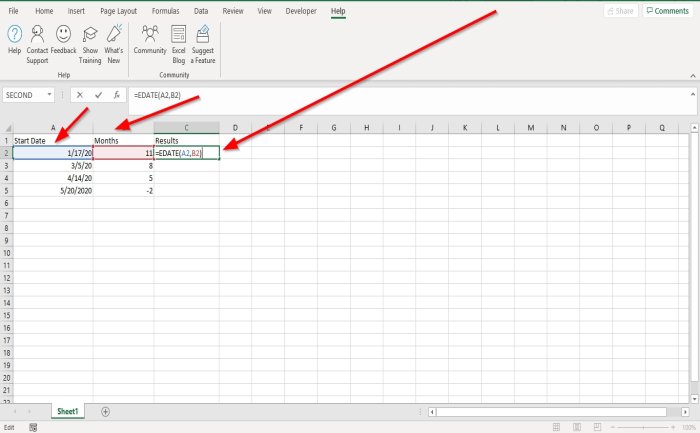
First, click the cell where you want to see the result, then type =EDATE (A2, B2).

Press Enter, you will see your result; the negative value in the table (-2) will go to two months before the date in the table.
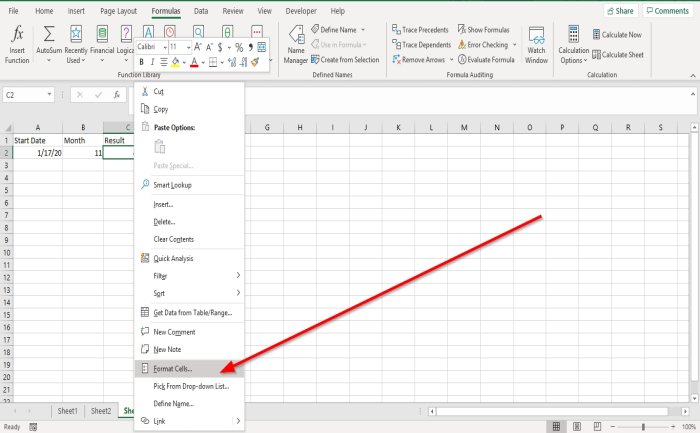
If the result not a date but serial values, right-click the cell of the result in the drop-down menu select Format Cells.
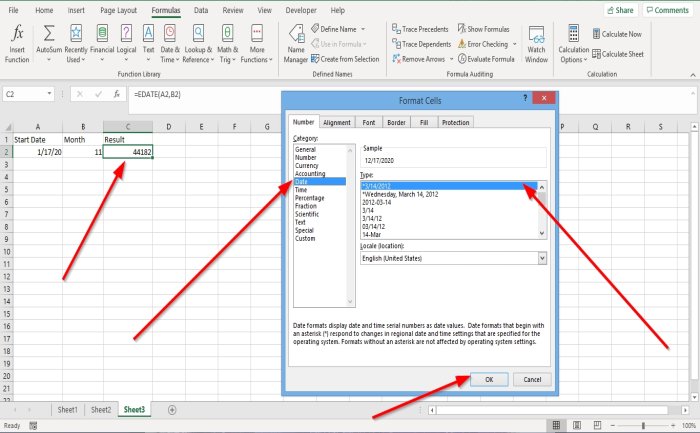
In the Format Cells dialog box, choose a date; on the right, choose type *3/14/2012.
Click Ok it will change into a date.
Place the cursor at the bottom end of the cell. You will see a Plus symbol; drag it down. You will see the other results in the other cell.
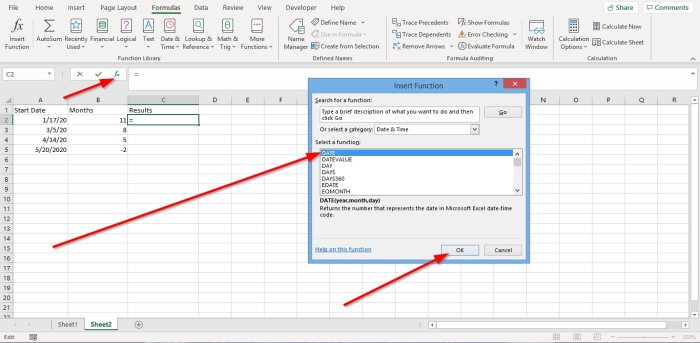
There are two other options that you can place the EDATE function into the cell.
Option number one is to click on fx; an insert function dialog box will appear.
In the Insert Function dialog box, you can select the category of function you want. Select the category Date and Time.
In the Select a function list, select EDATE.
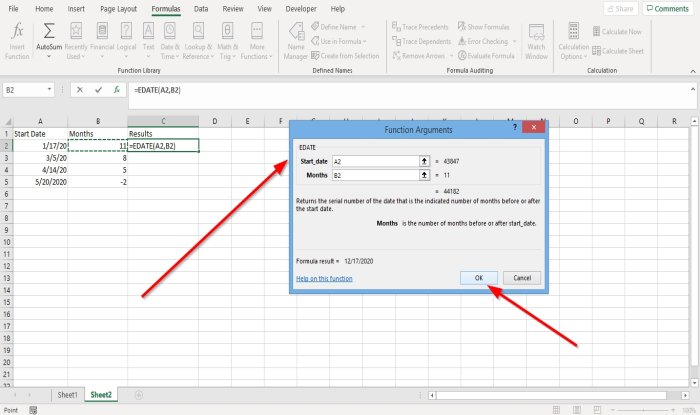
A Function Argument dialog box will appear. In the dialog box, where you see Start_date type A2 or click the cell A2, it will appear in the entry box.
At Months type B5 or click the cell B5, which automatically appears in the entry box.
Now, click OK you will see your result.
Click on the bottom edge and drag to see other results.
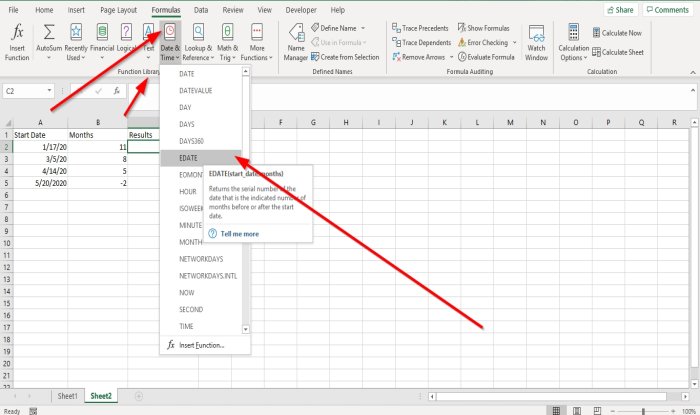
Option Two is to go-to the Formulas. In the Function and Library group, click Date and Time; in its drop-down list select EDATE. Functions Argument dialog box will appear.

In the Functions Argument dialog box, at the Start_date, type A2 or click the cell A2, which automatically appears in the entry box.
At Months type B5 or click the cell B5, it will automatically appear in the entry box.
Select Ok; you will see your results.
How to use the EOMONTH function in Excel
In this tutorial, we want to find the last date after each month in the table pass; for instance, we want to find the last date of 4 months after the date, Jan-17-20.
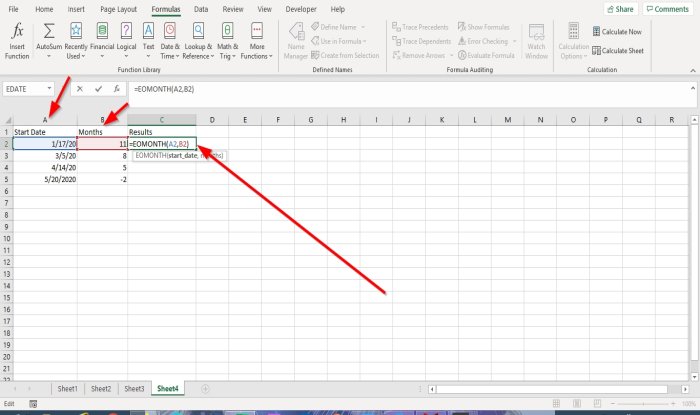
Click the cell where you want to place the result. Type =EOMONTH then bracket.
Inside the bracket, type A2, A5, then close the bracket.
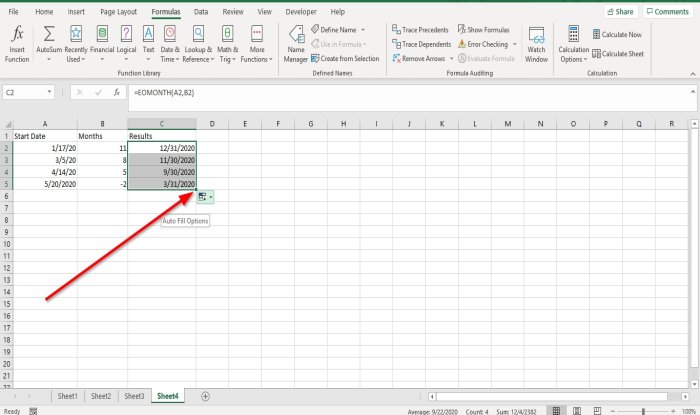
Press Enter, you will see your result.
Click on the bottom edge and drag to see the other results.
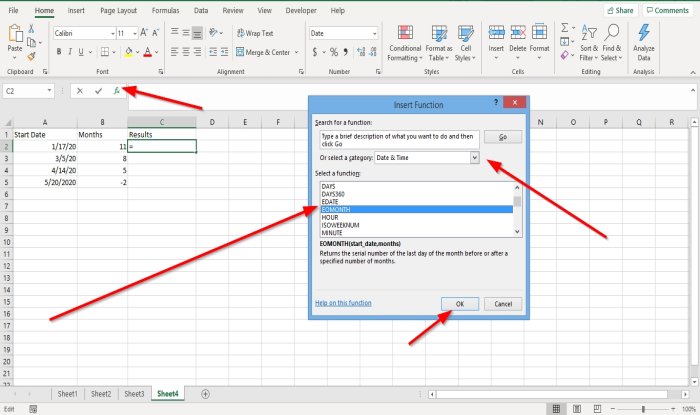
There are two more options that you can place the EOMONTH function into the cell.
Option number one is to click on fx; an Insert Function dialog box will appear.
In the Insert Function dialog box, you can select the category of function you want. Select the category Date and Time.
In the Select, a function list, click EOMONTH.
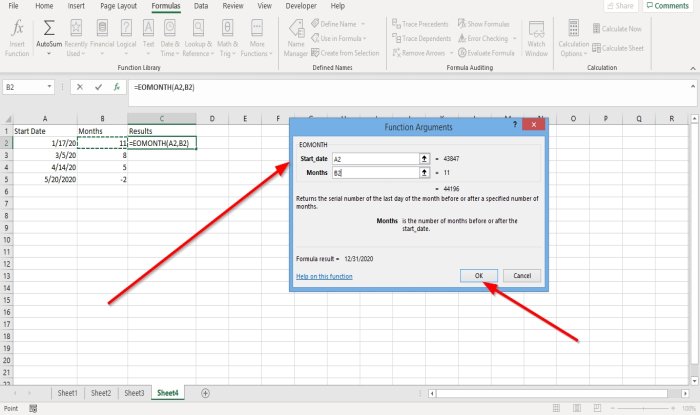
A Function Arguments dialog box will appear. In the dialog box, where you see Start_date type A2 or click the cell A2, it will appear in the entry box.
At Months type B5 or click the cell B5, it will automatically appear in the entry box.
Now, click OK you will see your result.
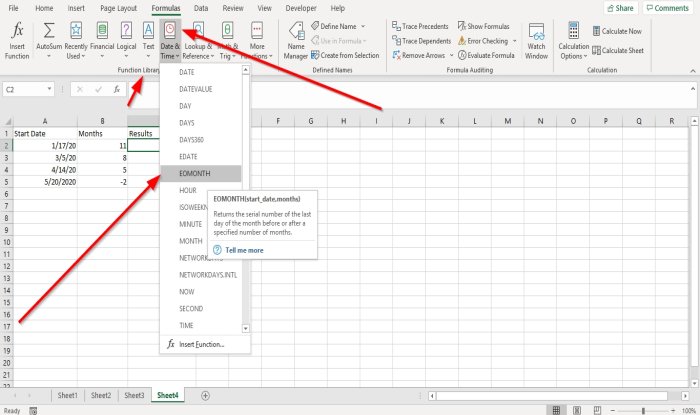
Option Two is to go-to the formulas. In the Function and Library group, click Date and Time; in its drop-down list select EOMONTH. Functions Arguments dialog box will appear.

In the Functions Argument dialog box, where you see Start_date type A2 or click the cell A2, it will appear in the entry box.
At Months type B5 or click the cell B5, it will automatically appear in the entry box.
Select OK; you will see your results.
Read next: How to use Hour, Minute, and Second Function in Excel.